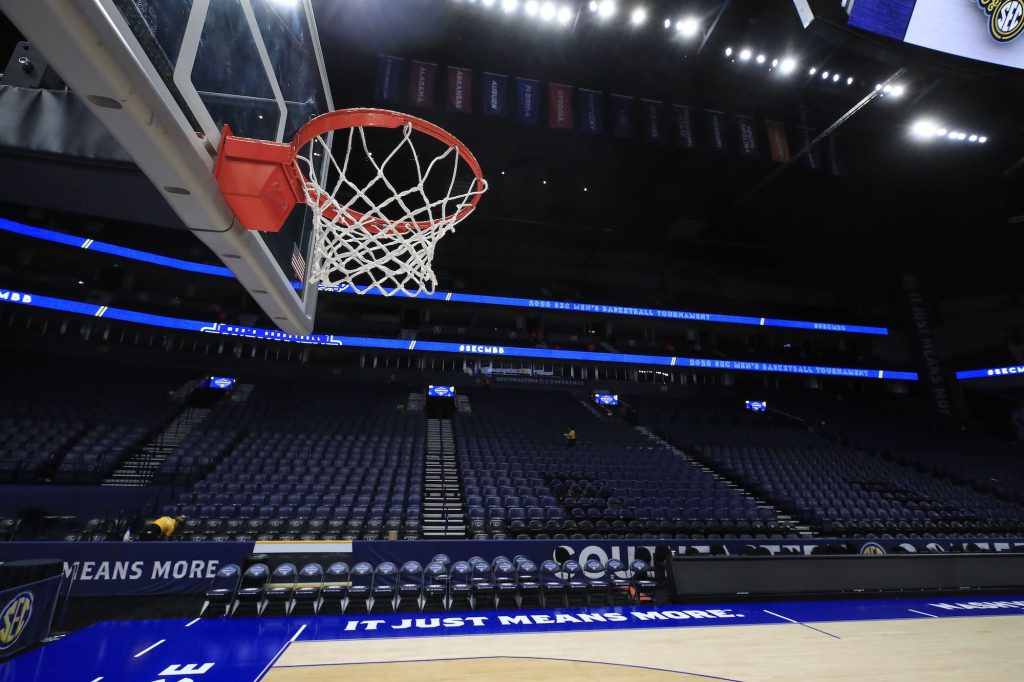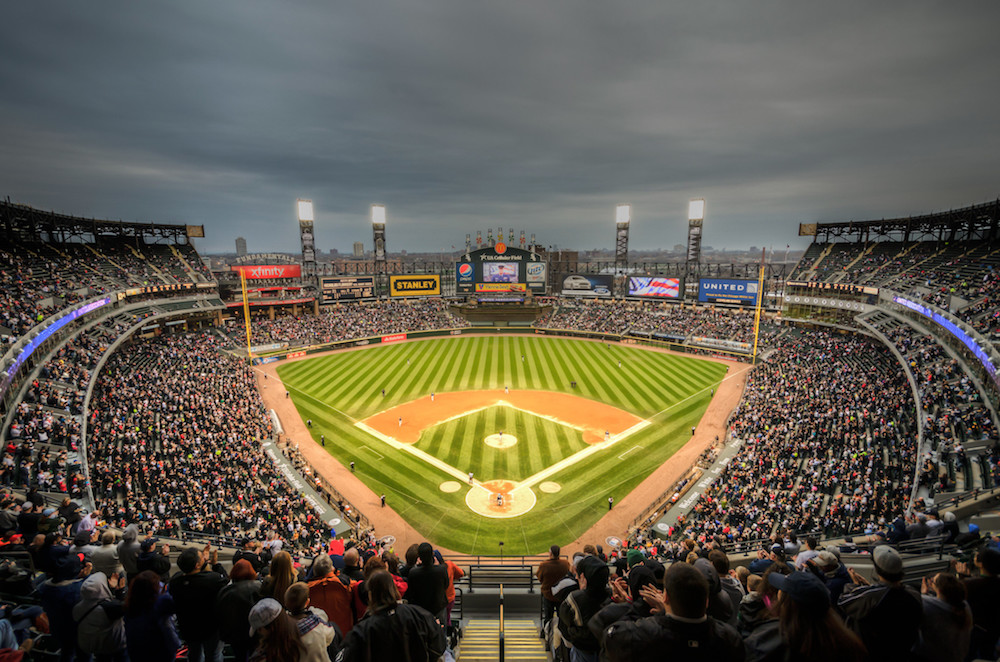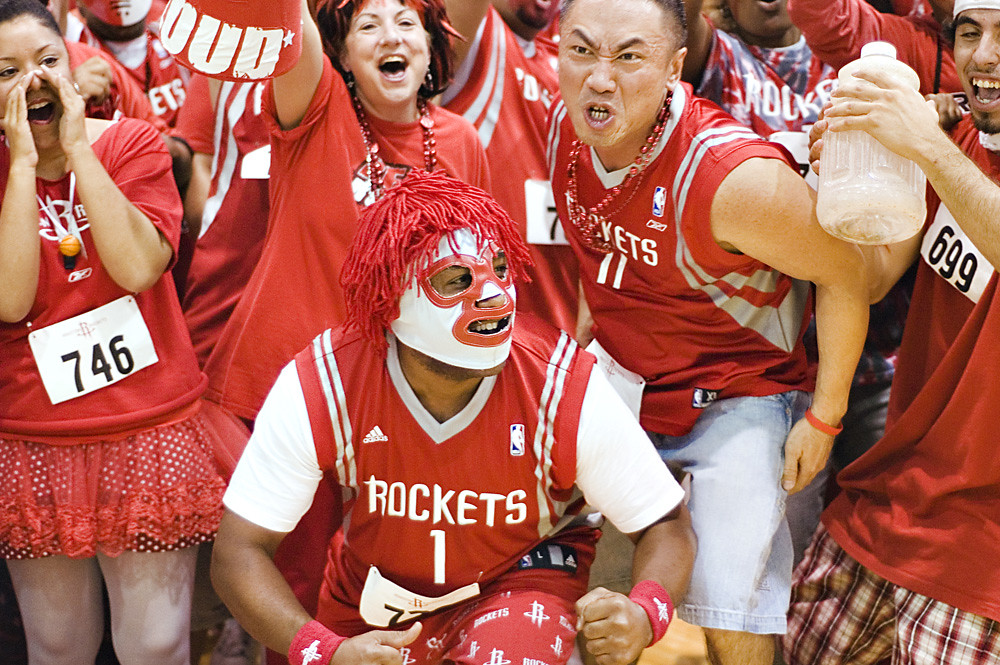Why Are Sports Fans So Bereft Without Live Games?

For some people, springtime means longer days, warmer weather, and looking forward to gardening and summer vacations. But for sports fans in the United States, springtime means excited conversations with co-workers about the previous night’s March Madness game, debates over the top contenders for the NBA and NHL post seasons, and the smells of the ballpark and buzzing of the crowds on the MLB’s “Opening Day.” Yet this year, sports fans have missed out on all of their usual markers of spring.
It’s been 11 weeks since the NBA suspended the 2019–2020 season “until further notice,” precipitating a swift shutdown of sporting events worldwide due to the COVID-19 pandemic. The absence of sports has taken an emotional toll on fans. Responding to demands from fans, ESPN moved up the premiere of its 10-part Michael Jordan miniseries The Last Dance from June to April. The recent NFL draft, which was broadcast virtually, was hyped as “the Quarantine Super Bowl.” On May 17, when TaylorMade Golf hosted a charity golf match, President Donald Trump called into NBC Sports’ live broadcast to express his appreciation for the first live golf event in months. These events may scratch a two-months-long itch, but they by no means fill the sports-shaped hole in many people’s lives.
That may sound hyperbolic in the face of a global pandemic. But sports are not only an important part of American culture and social life, they have also been vital historically in times of national crises. As with other quarantine adaptations, people (and TV networks) are trying to figure out how they can keep up their daily diet of sports when live sports are nowhere to be found. The short answer is that they can’t—not exactly. The longer answer involves thinking about what people get from live sports in tangible ways and where they can find those things in the meantime.
Studies show that fans watch live sports for the social connection with others, the aesthetic quality of sport, the escape from everyday life, and the pleasant stress or “eustress” that they experience during games. All of these qualities point to sport as an important ritual that is distinct from other forms of entertainment.
Anthropologists have observed that people engage in ritual activity to gain a sense of control over their lives and to bond with others. Since the onset of the COVID-19 pandemic, people worldwide have made adaptations to their rituals, hosting online graduations and weddings, and creating new quarantine-friendly stand-ins, such as weekly game nights, on Zoom. But adapting the ritual of watching live sports is not so straightforward because the elements that fans love about live sports cannot be easily re-created.
The last few months have given some of us the time to reflect on the enormous role sports occupy in contemporary life. As sports fans and anthropologists who study the relationship between sports and social identity, we feel the same disorientation that sports fans around the world are experiencing. By examining live sports through anthropology’s approach to understanding ritual, we see that sports are much more than a source of entertainment and capital—they are a vital connection to community and possibility.
Like holidays, weddings, and other ritual occasions, sports are one of the important ways that humans bond with one another, whether it be in a stadium, a pub, or a living room. Anthropologist Victor Turner referred to this kind of bonding as “communitas,” or the ritual community in which all members come together as equals to take part in a shared experience. Even though one team must suffer defeat, the connectivity established through fandom creates a sense of belonging, identity, and engagement.
And while sports, like ritual, are highly structured and repetitive, they are also defined by uncertainty. Sports fans love the uncertainty that comes with competition, even as they take ritualistic actions, like wearing a “lucky” jersey, to shield themselves from losing. In fact, uncertainty isn’t a bad thing; the excitement and stress of a live game remind fans that every new competition holds a potential win.
Watching the outcome of an athletic event unfold in real time is how sports fans bond, how they create communitas. It’s about taking part in a common experience, but more: It’s about participating in a common experience rife with possibilities. Whether it’s sharing in the thrill of a March Madness upset or commiserating over a baseball game and looking forward to the next one in the series, fans have gotten used to experiencing this communitas regularly; it is part of their (and our) weekly, if not daily, routine.
But as of now, fans have lost many of the social experiences that define their day-to-day lives: pre-game jitters and excited conversations with other fans about game predictions, game-time get togethers or happy hours, weekends spent at the ballpark or field, and post-game discussions with friends or by favorite radio and podcast hosts. The absence of communitas through sport may result in fans feeling even more disconnected from others during this period of social distancing.
Recognizing the beloved elements of live sports helps explain the lukewarm public response to the alternative sports programming being broadcast in their absence. Many fans have been tuning in to reruns of previous sporting events and sports documentaries, sports news shows, obscure sports (such as marble racing and cherry pit–spitting competitions), and esports (live video game competitions). With a few exceptions, consumption of these alternative sports offerings has been modest compared to typical TV ratings for live sporting events.
Alternative sports offerings don’t fill the void left by live sporting events.
Survey data suggests that fans are still figuring out how to get their sports fix. Morning Consult, a tech company specializing in market research for brands and media companies, interviewed 2,200 Americans from March 20–22 about COVID-19 and its impacts on their lives. Of those surveyed, 1,519, or 69 percent, were self-reported sports fans, and of that group, less than half reported being very or somewhat interested in documentaries, sports-related news, and other live sports replacements. In other words, although the shutdown of sports has impacted fans’ lives, the alternatives don’t really fill the void left by live sporting events. It seems the alternatives don’t have the same ritual importance as live sports and do little to satisfy people’s urge to connect and celebrate—or mourn—a team or an athlete.
Our own experience over the last couple of months bears out those statistics: Watching a rerun of a past Super Bowl game or a virtual game of H-O-R-S-E just isn’t as fun or captivating as a live game. For us and so many others, sports are defined by that communitas we establish around a team or an athlete and the context of controlled chaos—those uncertain outcomes that occur as the clock ticks down and your hopes and fears are in sync with those around you. The Last Dance miniseries, the WNBA draft, and the NFL draft have been welcome interruptions to the last month’s sports schedule in part because they have brought people together (in a socially distanced way, of course) to watch live sports content in a way that is reminiscent of regular sports rituals.
So why do so many hardcore sports fans feel empty and deprived of meaning in the absence of the usual spring rituals? Documentaries, sports-related COVID-19 news, reruns of past games, obscure sports competitions, and virtual sports all lack that unique combination of structured ritual and possibility that only live sports can provide. Why?
Because people already know the outcome of these events and there’s no shared experience, fans are left wanting. Fans miss hearing familiar voices announcing games, reading text messages and tweets after a big play, and alternating between holding their breath and screaming at their teams in crowded stadiums, bars, and living rooms.
The hardest part? Sports fans have no idea when they will get any of these things back.
The sports lineup has grown less grim in May in some parts of the world. Baseball and soccer leagues reemerged in South Korea and Taiwan, the German soccer league Bundesliga resumed playing, and live NASCAR races and socially distanced golf matches were added to the calendar. In Germany, South Korea, and Taiwan, full leagues have been able to resume their activities in part because of aggressive governmental responses to the COVID-19 outbreak and widely available coronavirus testing, which is not the case in many other nations.
In the U.S., professional leagues and political leaders in several states are in support of bringing back professional sports in the next few months—minus the spectators. The NCAA announced that some college football and basketball activities could begin on June 1. Although resuming professional leagues would likely benefit both economies and morale, it is a contentious topic. It is unclear if most sports teams can resume practice and competition any time soon in a safe or ethical way that satisfies all parties.
As we, along with so many other fans, wait for live sports and our corresponding rituals to resume, there are ways to turn the current sports offerings into communal experiences. Fans have been watching old sports games “together alone” while texting, tweeting, or video chatting. Over the last month, fans eagerly live-tweeted throughout The Last Dance on ESPN, and the communal, Sunday night documentary-watching is expected to continue over the next four weeks as ESPN rolls out four new 30 for 30 series of documentaries.
Still, there is something irreplaceable about the communitas of live sports. They connect many of us in real time in a way that feels transformative, affirming our sense of community and identity. If and when professional and amateur sports leagues resume worldwide, we do not know what the fan experience will look like, but we can probably guess that it will feel comforting, connecting, and exhilarating.

































